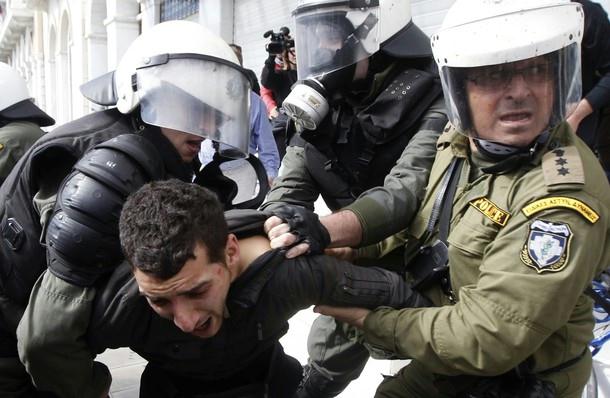By Ali Al-Bassam
Impunity Watch Reporter, Middle East
RIYADH, Saudi Arabia — Two Shiite protesters, Akbar Al-Shakuri and Mohammed Al-Filfil, were shot and killed by police in the Saudi Arabian town of Qatif. The police were sent to disperse those who gathered to protest the arrest of prominent Shiite cleric Sheikh Nimr Baqer Al-Nimr.

A statement from an Interior Ministry spokesman, Major General Mansour Turki, said the deaths followed a protest in the village of Awamiya after the arrest of Nimr, but said that no clash occurred between protesters and police.
“Security authorities had been notified by a nearby medical center on the arrival of four individuals brought in by their relatives,” Turki told Reuters. “Two of them were dead, the other two were slightly injured. Competent authorities initiated investigations over the incident.”
The Awamiya protests followed earlier demonstrations held in Qatif, where at least six protestors were shot and killed after the city held the largest protest it has seen since November and December.
“In the aftermath of the arrest … a limited number of people have assembled in the town of Awamiya,” Turki said. “Gun shots have been overheard in random areas of the town. However, there was no security confrontation whatsoever.”
Hussain Al-Alk, a resident of Qatif and a staffer at the Adala Center for Human Rights, states that hundreds of protesters gathered in Qatif hours after Nimr was shot and arrested last Sunday. Alk believed that Nimr was arrested because the government adhered to the demands of influential Sunnis to escalate its pressure on Shiite opposition.
“It seems that in the last month the government became too worried. The Sunnis have started saying, ‘Why when the Sunnis are talking against the government you are arresting him immediately, while Shias, you are not doing anything to him,'” said Alk.
Saudi officials stated that Nimr hurt his leg when authorities were chasing him. Seen as a radical cleric by the government, Nimr was arrested because the Interior Ministry considered him an “instigator of sedition.” The Ministry also said that he would be interrogated after he receivedtreatment for his injury. The official Saudi press agency reported that Nimr was arrested after he and his followers exchanged fire with security forces and crashed into a police vehicle.
Nimr’s brother, Mohammed, stated that the cleric was arrested while driving from a farm to his house in Qatif.
“He had been wanted by the interior ministry for a couple of months because of his political views,” Mohammed said. “In the past couple of months he has adopted a lot of Shiite issues and expressed his views on them, demanding their rights.”
Mohammed also said that the cleric was previously detained for several days in 2004 and 2006.
In a sermon delivered ten days ago, Nimr confidently stated that he would be arrested or killed, saying that he had only “heightened” the claims of his supporters. Shiites in the Sunni-ruled kingdom say they struggle to get government jobs or university places, that their neighborhoods suffer from under-investment, and that their places of worship are often closed down. The government denies charges of discrimination.
For further information, please see:
Al Bawaba — Saudi Arabia: Two Shiites Killed During Clashes with Police — 9 July 2012
Al Jazeera — Saudi Protest Crackdown Leaves Two Dead — 9 July 2012
BBC News — Two Die During Saudi Arabia Protest at Shia Cleric Arrest — 9 July 2012
Rasid — Saudi Security Forces Kill Two Protesters in Qatif — 9 July 2012
Reuters — Saudi Arabia Says Two Killed after Cleric’s Arrest — 9 July 2012


